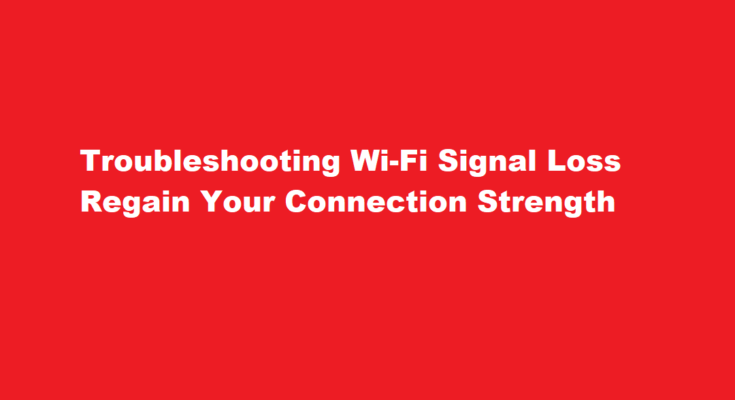In today’s connected world, a strong and stable Wi-Fi connection is essential for work, leisure, and communication. However, it’s not uncommon to encounter Wi-Fi signal loss, leading to frustration and interrupted activities. Fortunately, addressing these issues doesn’t always require a technical background. With a systematic approach and some troubleshooting steps, you can regain your Wi-Fi connection strength and enjoy uninterrupted internet access.
Identify the Problem
Before diving into solutions, it’s important to pinpoint the cause of your Wi-Fi signal loss. Common culprits include physical obstructions, interference from other electronic devices, outdated hardware, or router misconfigurations. A clear understanding of the issue will help you address it effectively.
Check Physical Obstructions
The placement of your router plays a crucial role in signal strength. Keep it in an open, central location away from walls and large obstructions. Physical barriers like walls, floors, and even furniture can weaken signals. Adjusting the router’s position might significantly improve signal coverage.
Optimize Channel Selection
Routers operate on specific channels, and neighboring networks can cause interference. Access your router’s settings and experiment with different channels to find the one with the least interference. This simple adjustment can have a substantial impact on your connection quality.
Update Firmware and Drivers
Outdated firmware on your router or outdated network drivers on your devices can lead to connectivity problems. Regularly check for updates and install them to ensure optimal performance and security.
Manage Device Congestion
Having too many devices connected to your Wi-Fi network simultaneously can lead to a slowdown. Disconnect devices that are not in use, and consider investing in a dual-band router to separate devices onto different frequency bands, reducing congestion.
Use Wi-Fi Extenders or Mesh Systems
For larger spaces, a single router might not provide complete coverage. Wi-Fi extenders or mesh systems can help spread the signal evenly throughout your home, eliminating dead zones and boosting signal strength.
Secure Your Network
Unwanted users accessing your network can lead to a slowdown. Ensure your Wi-Fi network is password protected with a strong, unique passphrase. This will not only improve security but also prevent unauthorized devices from hogging bandwidth.
Reduce Interference
Other electronic devices, such as cordless phones, microwave ovens, and baby monitors, can interfere with Wi-Fi signals. Keep your router away from these devices, especially in the 2.4 GHz frequency range, where interference is more common.
Check for Malware
Malware or viruses on your devices can cause network issues. Regularly scan your devices for malicious software and keep your antivirus software up to date.
Quality of Service (QoS) Settings
Some routers have QoS settings that allow you to prioritize certain types of traffic over others. Adjust these settings to give priority to activities that require a stable and fast connection, such as video conferencing or online gaming.
Reset and Reconfigure
If all else fails, consider performing a factory reset on your router and reconfiguring it from scratch. This can eliminate any complex settings that might be causing issues.
Seek Professional Help
If you’ve tried all the above steps and still experience Wi-Fi signal loss, it might be time to consult your internet service provider (ISP) or a professional technician. There could be underlying issues with the ISP’s service, or the router might require replacement.
Frequently Asked Questions
Why is Los blinking red?
This means that your internet connection isn’t active because there’s a problem with the transmission to your device. The red blinking LOS light on the router may indicate various possible causes, including: Loose cable or connector: A disrupted or improperly connected cable or connector can result in the LOS signal.
What does Los mean on a WIFI router?
Short for loss of signal, LOS is an indicator on a networking device that shows a signal or connection is dropped or terminated.
Conclusion
A stable Wi-Fi connection is crucial in our modern lives. While Wi-Fi signal loss can be frustrating, resolving it is often a matter of systematic troubleshooting. By identifying the problem, optimizing your setup, and following the steps outlined above, you can regain your Wi-Fi connection strength and enjoy uninterrupted internet access. Remember, a little patience and persistence can go a long way in ensuring a reliable and fast connection for all your online activities.
Read Also : Bridging the Gap How to Fix Heel Gap for a Comfortable Stride



